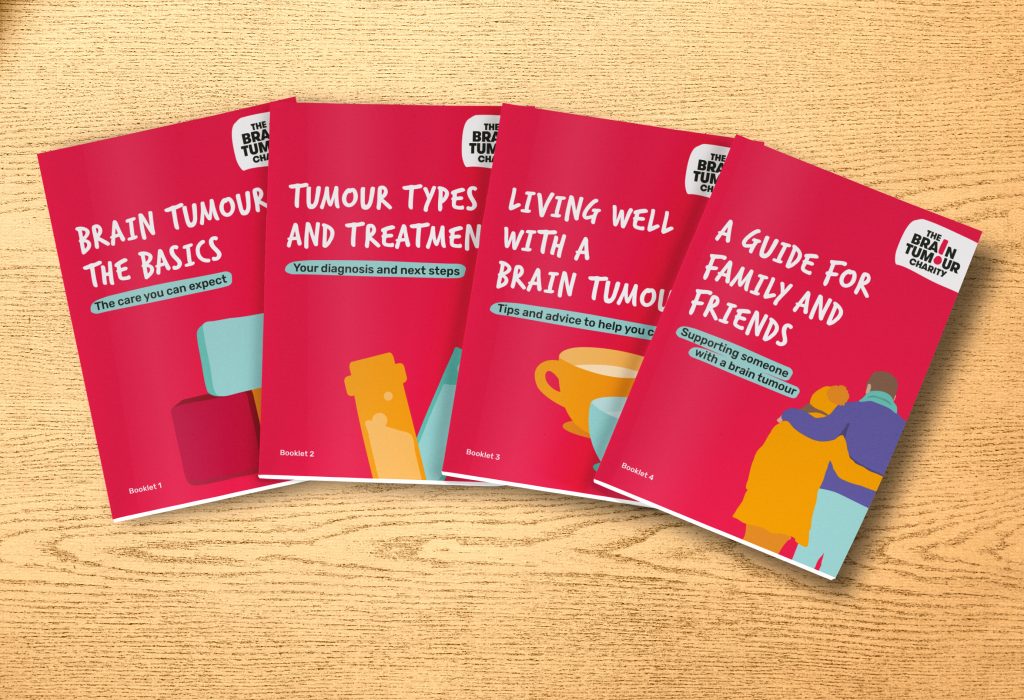Brain tumour biopsy
A brain tumour biopsy means taking a sample of abnormal tissue to study. This might help diagnose the type and grade of brain tumour that you have. It also can help your healthcare team decide on the best treatment plan for you.
On this page, we’ll discuss:
- What is a brain tumour biopsy?
- What happens during a biopsy for a brain tumour?
- Types of brain tumour biopsy
- What happens after a brain tumour biopsy?
What is a brain tumour biopsy?
A brain tumour biopsy is where a sample of abnormal tissue is removed to help diagnose the type and grade of tumour you have. The sample is taken during an operation and examined under a microscope in a laboratory.
For brain tumours, sometimes a biopsy will be taken as part of a craniotomy. A craniotomy is an operation to remove all of your tumour, or as much as is safe.
However, depending on the location of your tumour, a craniotomy might not always be possible, so a smaller operation is performed to get a sample of the tumour for diagnosis.
This operation is a surgical biopsy and is often called a burr hole biopsy. The tumour sample will be sent to the laboratory to be analysed and diagnosed by a neuropathologist.
A biopsy generally takes about 1-2 hours and can often be done as a day case. The results of your biopsy will show the type and grade of your brain tumour. This will allow your healthcare team to decide the best treatment for you.
What happens during a biopsy for a brain tumour?
- First you will have an MRI scan or CT scan to show exactly where the tumour is.
The scan can be up to a few weeks before the biopsy operation. - You will then be given a general anaesthetic to fall asleep.
- Or occasionally the procedure is performed under a local anaesthetic, but you will be sedated. If this is thought to be your best option, your healthcare team will discuss it with you, explaining what is done to prevent you feeling any pain, and help you mentally prepare for it.
Types of brain tumour biopsy
- Biopsy as part of a craniotomy – If you are able to have surgery to remove all or part of your tumour, this is called a craniotomy. As part of this, your neurosurgeon may take a small sample of your tumour to send to the lab for testing.
- Guided needle biopsy – During a guided biopsy your neurosurgeon uses either a CT or MRI scan to locate and take a sample from the tumour. This can be done in 2 ways:
- Fine-needle aspiration, which uses a thin, hollow needle to extract cells from your body.
- Core needle biopsy, which uses a wider, hollow-tube needle to extract tissue samples.
- Open neuronavigation biopsy – Sometimes a larger sample of the tumour might be needed, or if there is a high risk of bleeding, your surgeon may perform an open biopsy. This is for tumours which are on the surface of the brain, not deep inside. A neuronavigation system is used and a small part of your skull (‘bone flap’) is removed to give your neurosurgeon better access to your tumour. Samples are taken without passing a needle into the tumour. The hole is closed using staples or stitches.
After your biopsy, you may be given steroids to help with any brain swelling.
What happens after a biopsy for a brain tumour?
After your brain tumour biopsy, you may be given steroids to help with any brain swelling.
You may need to stay in hospital overnight or for a few days. However, sometimes a biopsy can be done as a day case and you will be allowed home that day.
If you have had a craniotomy, your recovery might take longer and you may need a longer stay in hospital.
What happens to brain tumour tissue after a biopsy?
The main aim of taking tumour tissue at surgery is for diagnosis, to find out what type of brain tumour you have. This is done by sending the tumour sample to a lab where its biomarkers and characteristics are analysed.
If, after testing to establish diagnosis, there is tumour tissue left, it may be stored in a tissue bank for use in the future. Tumour tissue can be used for research purposes (e.g. the Tessa Jowell Brain MATRIX study) and could also be used in future and emerging novel treatments, such as cancer vaccines.
How a tissue sample can be used depends on the amount that is obtained during surgery and also how it is stored.
The standard method for storing tissue is known as formalin fixation and paraffin embedding (FFPE). However, this can cause some damage to the genetic material in the sample and make future use limited.
Flash freezing is another type of tissue storage which is better at preserving the tissue. If you have your tumour sample flash frozen, you may be eligible to access specific clinical trials or future and emerging treatments.
The British Neuro-oncology Society (BNOS) have written some guidelines for the tissue sampling of brain tumours.
Ask your neurosurgeon whether flash freezing could be possible for you. Brainstrust have an information sheet on talking to your neurosurgeon about tissue collection.
Support and Information Services
Research & Clinical Trials Information
You can also join our active online community.
In this section

Get support
If you need someone to talk to or advice on where to get help, our Support and Information team is available by phone, email or live-chat.
Recommended reading
Share your experiences and help create change
By taking part in our Improving Brain Tumour Care surveys and sharing your experiences, you can help us improve treatment and care for everyone affected by a brain tumour.

